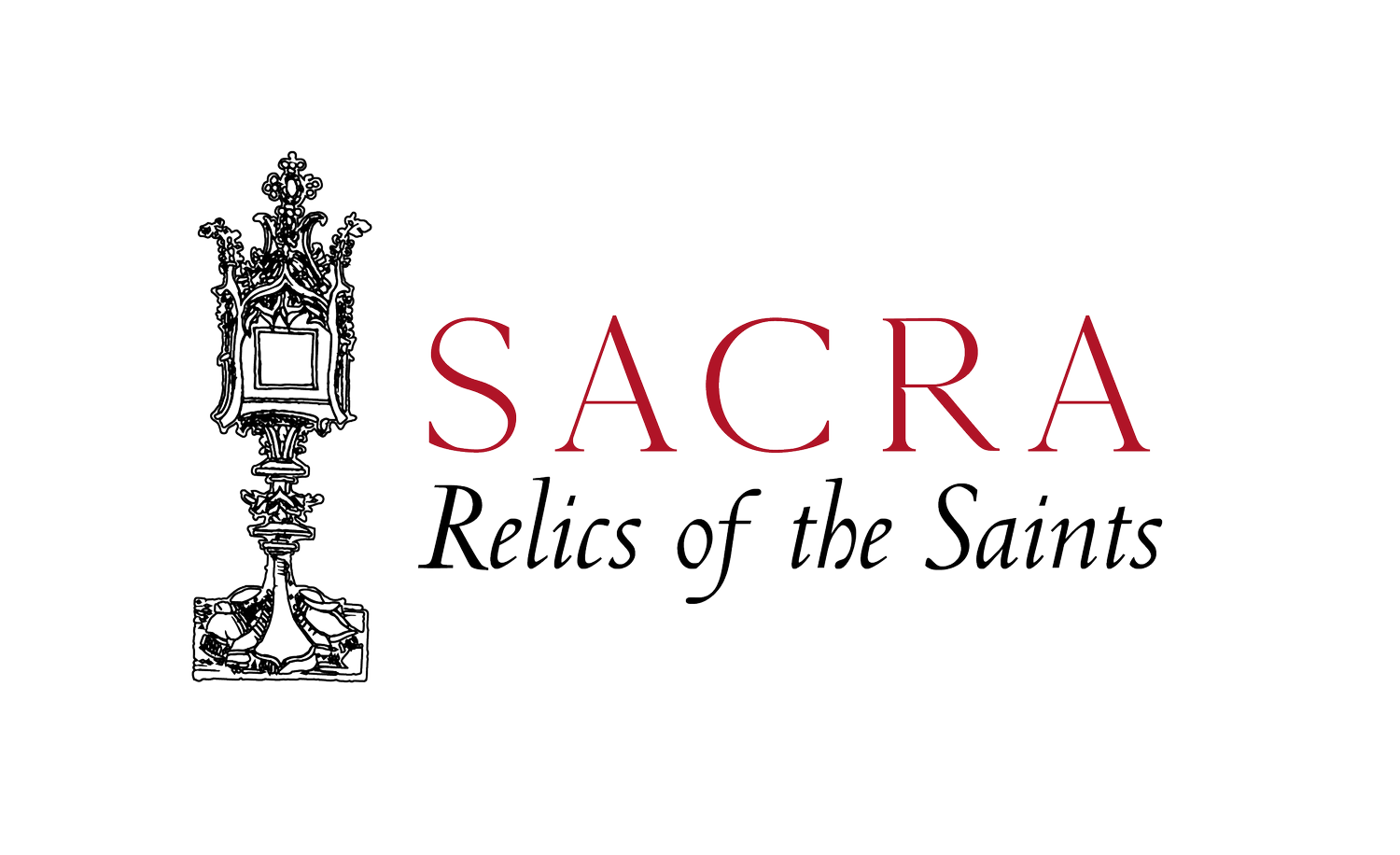Sacred contents—unknown
On a hot Sunday morning in late July 1884, the first Archbishop of Minneapolis closed and sealed this metal box and its unknown contents. Sacra unlocked this box’s history.
In the course of a full-scale parish restoration, the clergy at St Mary, Stillwater, found a mysterious sealed metal box beneath the altarstone of the main altar. Knowing that the box dated from the parish’s dedication by the famed John Ireland, the parish contacted Sacra to better understand what could be inside.
Because the box was sealed liturgically during the church’s solemn dedication rite, it would be inappropriate for the box to be opened in a casual, private setting. The parish arranged for a local bishop and representatives of the parish to observe and formally witness the receptacle’s opening.
The relic box is liturgically opened.
Before revealing the contents of the box (below), we should consider the mystery hanging over the thing. An altarstone usually contains the bone relics of three martyrs, as well as grains of incense placed by the bishop consecrating it. This practice dates to the apostolic days of the Church, when holy Mass would be offered on the tombs of the martyrs. It is such an integral part of the Church’s worship that these relics were considered a requirement to celebrate the Mass until the later part of the last century. Because the altar where the box was found already had a consecrated stone, there was some doubt about whether the box would contain additional relics. If it did in fact have them, there was no guarantee the relics would be identifiable or even recognisable after more than a century.
The last time this box closed, it shut on a very different world. 1884 saw the completion of the George Washington monument in D.C. (then the tallest structure in the world), Pope Leo was writing a decree denouncing Freemasonry in Rome, and the first drafts of the Oxford English Dictionary were released to the public. No one living had any way to know what was inside.
✠
The room quieted, anticipation swelled, and all watched on as the threads were cut and the box’s lid was carefully lifted off. Inside, was a fragile and dirty, but nonetheless legible decree! The decree was read aloud, and the relics, meticulously labeled by the Vatican one hundred years before, were gingerly taken out.
The dedication decree and envelope containing the sacred relics.
The contents of the box were exactly as hoped, a clearly preserved and legible decree (on notebook paper!) signed by John Ireland and dated from the day of the parish’s dedication in 1184. Next to the decree were the preserved relics of three Roman martyrs: Ss Pirimus, Margarita, and Vincentia. Although they were safely guarded for a century and a half, these relics needed cleaning and restoration. Sacra oversaw this process of restoration.
The parish would be rededicated on its anniversary, and the newly-housed relics would be returned to their place of veneration in the main altar of the church for centuries to come.
Relics intended for sealing in altars were normally not prepared in ornate reliquaries. This allowed relics to be sent to distant missions at a low cost, and for the relics to fit in a variety of sized altars and altarstones. The relics, small fragments of bone, would be carefully prepared in a paper packet with a label of its contents (here barely visible), and sealed. The parish asked for these relics to be placed in thecas (round reliquaries) so the relics could be venerated by the faithful before they were resealed in the altar. Sacra cleaned and repaired them so they could be given the honour they deserve!
The relics from the envelopes cleaned and placed in thecas.
The thecas (gold circular reliquaries) are placed in non-toxic plastic cases with labels, to ensure a weather-tight seal and further protect them for centuries to come. The parish also chose to add the relics of two other martyrs, St Boniface and St Isaac Jogues, who have a special connexion to their history. The original grains of incense from the church’s dedication were also cleaned and returned to their original place. A copy of the original dedication decree, a re-dedication decree from the current Archbishop, and authentication documents for each of the relics were placed in a shrunk format, along with the relics to be resealed. The original documents are kept in the parish archive.
The restored relics and their documents, prepared by Sacra ready for resealing.
Before the re-dedication Mass, the relics were exposed outside the sanctuary on a table for veneration by the faithful. They are the spiritual heart of the parish, and will be special intercessors for the faithful there.
The dedication relics displayed for veneration.
The relics were resealed with the assistance of Sacra into the original metal box, and placed in a finer, wooden box, fashioned by a parishioner, inscribed outside with its contents. The relics again rest where they were placed more than a century ago, the saints watching over the parish. Who can say what the relics will find when the box is next opened?








